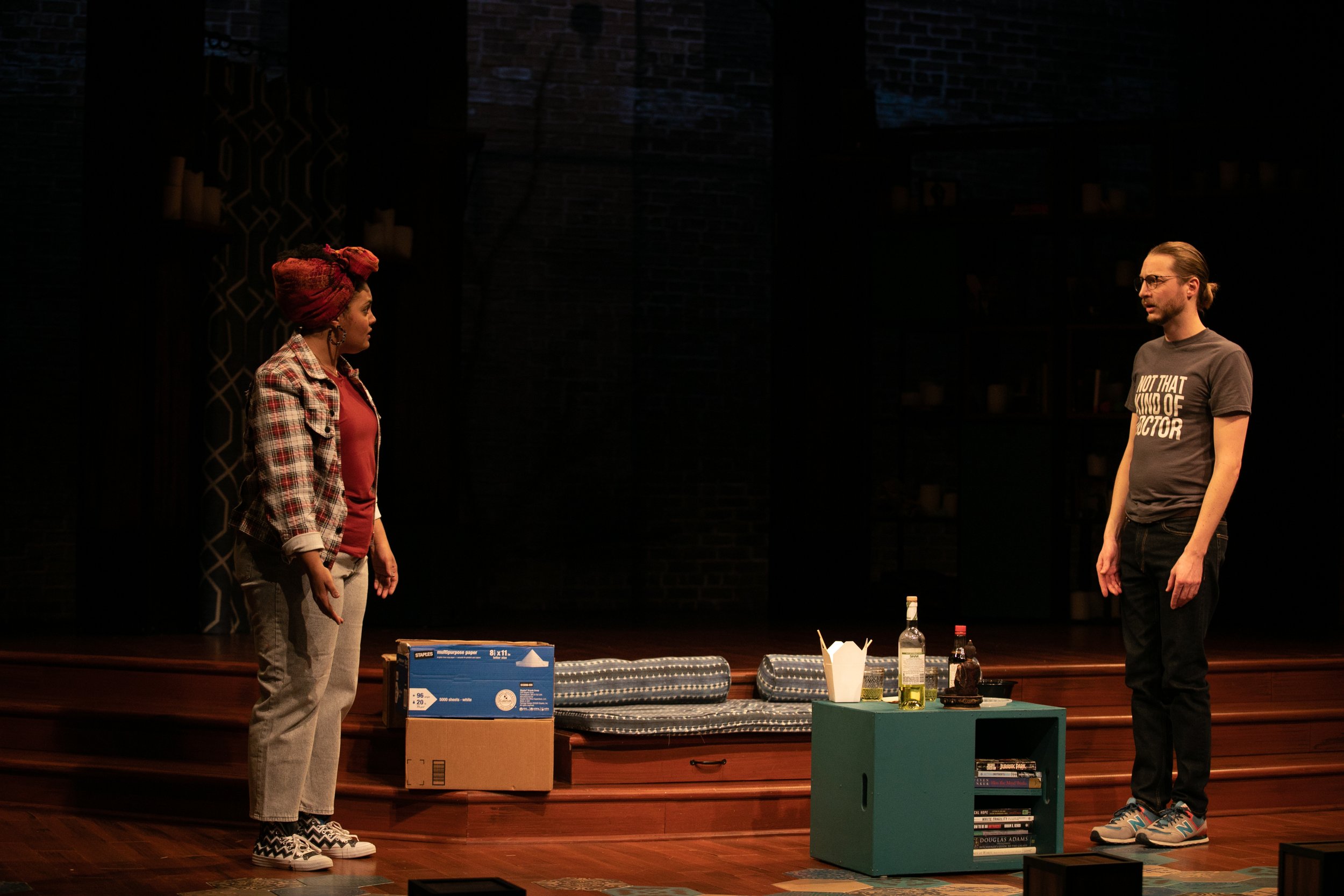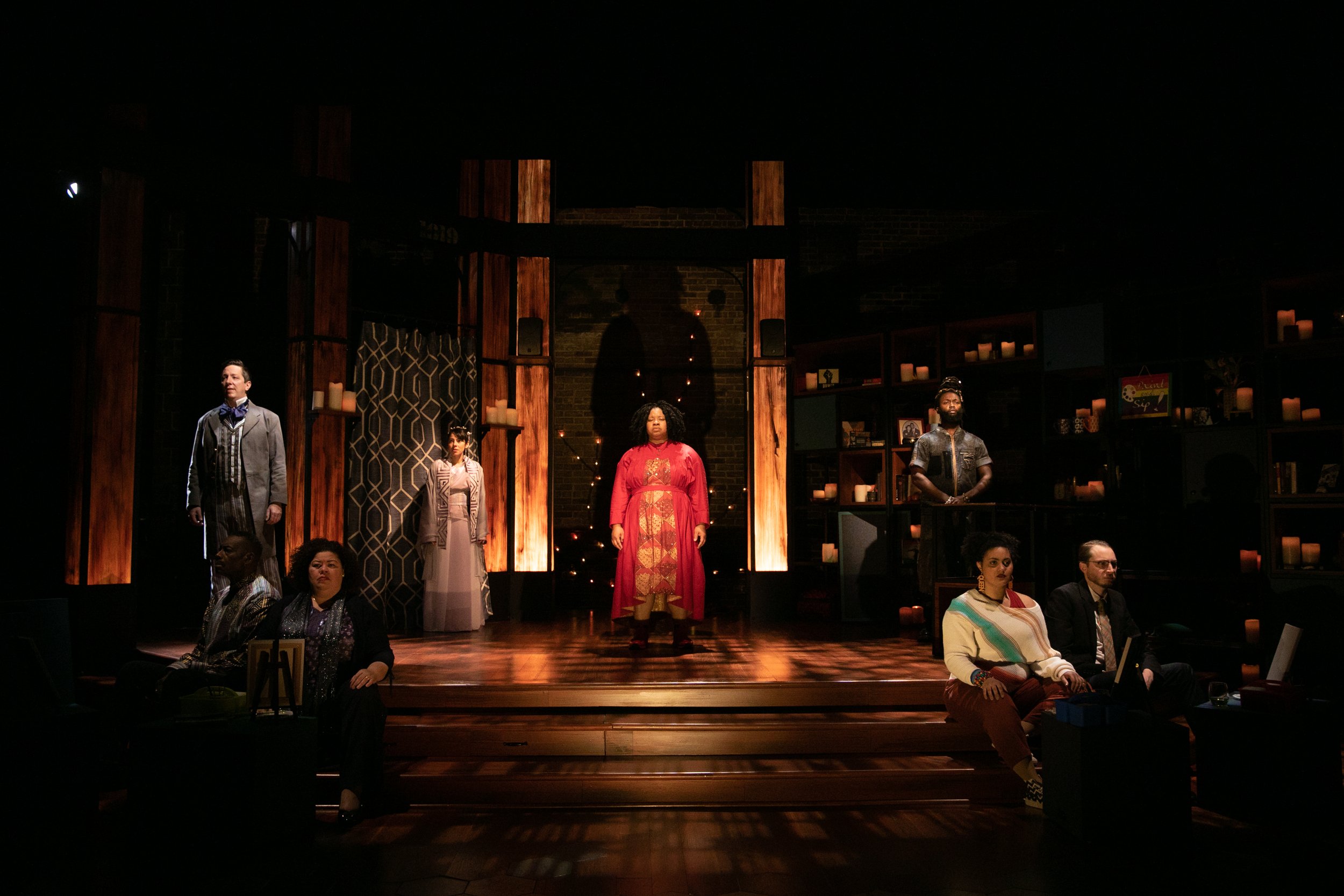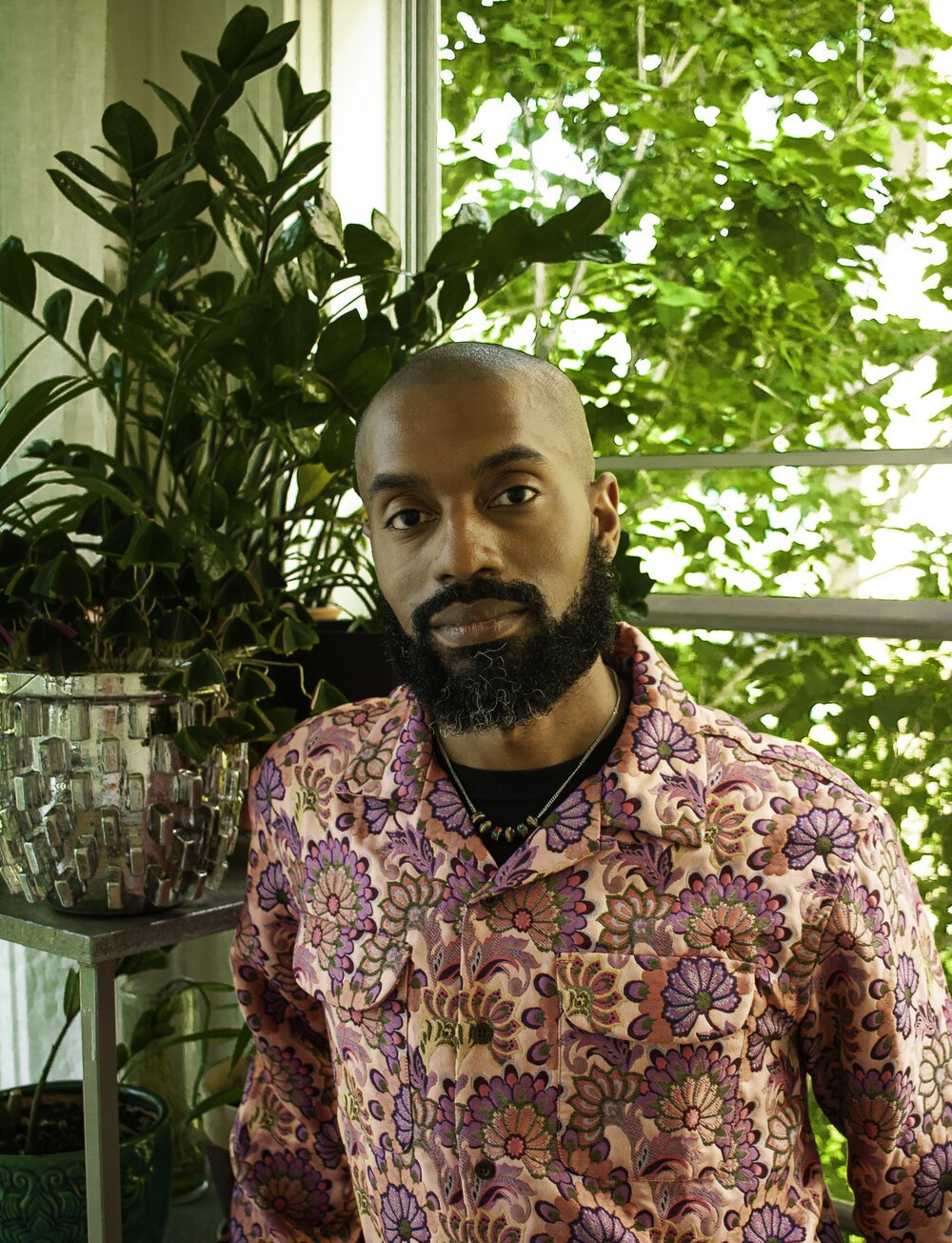A LOOK BEHIND THE SCENES: Redwood Costumes
We sat down (virtually) with REDWOOD’s talented costume designer Trevor Bowen to delve into his design process and how he approached bringing Brittany K. Allen’s characters to life.
Photo by Lauren B. Photography
Redwood plays with different time periods, bouncing between past and present. How did you approach creating costumes that represent the garb of the ancestors, but also feel grounded in modern day?
This began with the idea of using color as the grounding point for the ancestors. Each ancestor has a specific color that defines them. Tatum is in blue, Alameda is in Red, and Harriet is in Purple.
Red and Blue are primary colors from which many shades are built from, this is a metaphor for those persons being the root of the family tree.
Given that playing with time/mood shifts is one of the defining parts of the story it was very important that the audience can follow along each ancestor as they weave in and out of the contemporary world into their personal past/present.
Photos by Lauren B. Photography
Can you explain the importance of the colors of the ensemble and how their costumes transition to their almost “true forms” at the end?
All of the colors ultimately relate back to the ancestors. Napoleon skews more blue than red in the 1st look as he was hopefully a protégé of his father Tatum, the accent color russet is a blend of the colors red (Alameda) and brown (his journey on foot to freedom).
Photo by Lauren B. Photography
Meg consistently wears various shades of red and blue in all of her looks, often with a bit of tension between the pattern and colors. This supports her feeling of confusion, and questioning she is in throughout the play. Meg's shoe's also represent her deep, and initially subconscious connection to her ancestors. The zig-zag is an Adrinka symbol connecting one to their ancestors.
Uncle Stevie's first look, the plaid tracksuit, represents and supports where he is mentally and physically. The plaid is the color of his ancestors, and is also similar to the way a DNA chart is depicted. He is deep into genealogical research. While this is happening he also wants to look hip in the hip hop class.
The ancestors' costume at the end represents a transcendent approach to what each ancestor wore in the time they were alive. Each fabric used has a bit of a glowing/refractive quality which is celebrated through the lighting design. These also serve as representations of how the contemporary characters may envision each person as they learn more about them. Each look supports the strength of character of each ancestor.
Photo by Lauren B. Photography
As Harriet’s character says “In the stories you tell it’s always Black or White, but there were other Onlies in your line…” How did you approach creating her final costume?
Purple is a color only used in Harriet's wardrobe. She consistently stands boldly alone in several moments, and has a perspective not many of the other characters have.
Harriet's home place is China. It was imperative that this look reflects her point of view, and how she might have dressed in her time.
How did the costume grow after Harriet’s recast to better reflect Morgen Chang’s ethnicity?
H. Adam, the director, continued our conversation about accurate representation on stage and the intersections with Harriet's ethnicity.
The initial final look was a Hanbok, a traditional Korean garment. This became a Hanfu, a traditional Chinese garment.
How did you capture this stunning accuracy while staying within the overall design of REDWOOD?
The creative team had established a really clear and strong framework pre pandemic. In a way the cake was in the oven... the oven just got turned off.
Once we came back together, it felt like striking up a good conversation with friends, and an opportunity to refine, rather than re-do.
ABOUT THE ARTIST:
Credits include Lady Day at Emerson Bar and Grill, Fly by Night, Bars and Measures (Jungle Theater); Trevor has designed productions at Steppenwolf Theatre, Pillsbury House Theater, The Kennedy Center, Minnesota Opera, Asolo Rep, Sheen Center, Boston Lyric Opera, Contemporary American Theatre Festival, Children’s Theatre Company, Seattle Children’s Theatre, 5th Ave, Ordway Center, Glimmerglass Opera Festival. Trevor Bowen is a 2021-22 McKnight Theater Artist Fellow at the Playwrights' Center. trevorbowendesign.com







